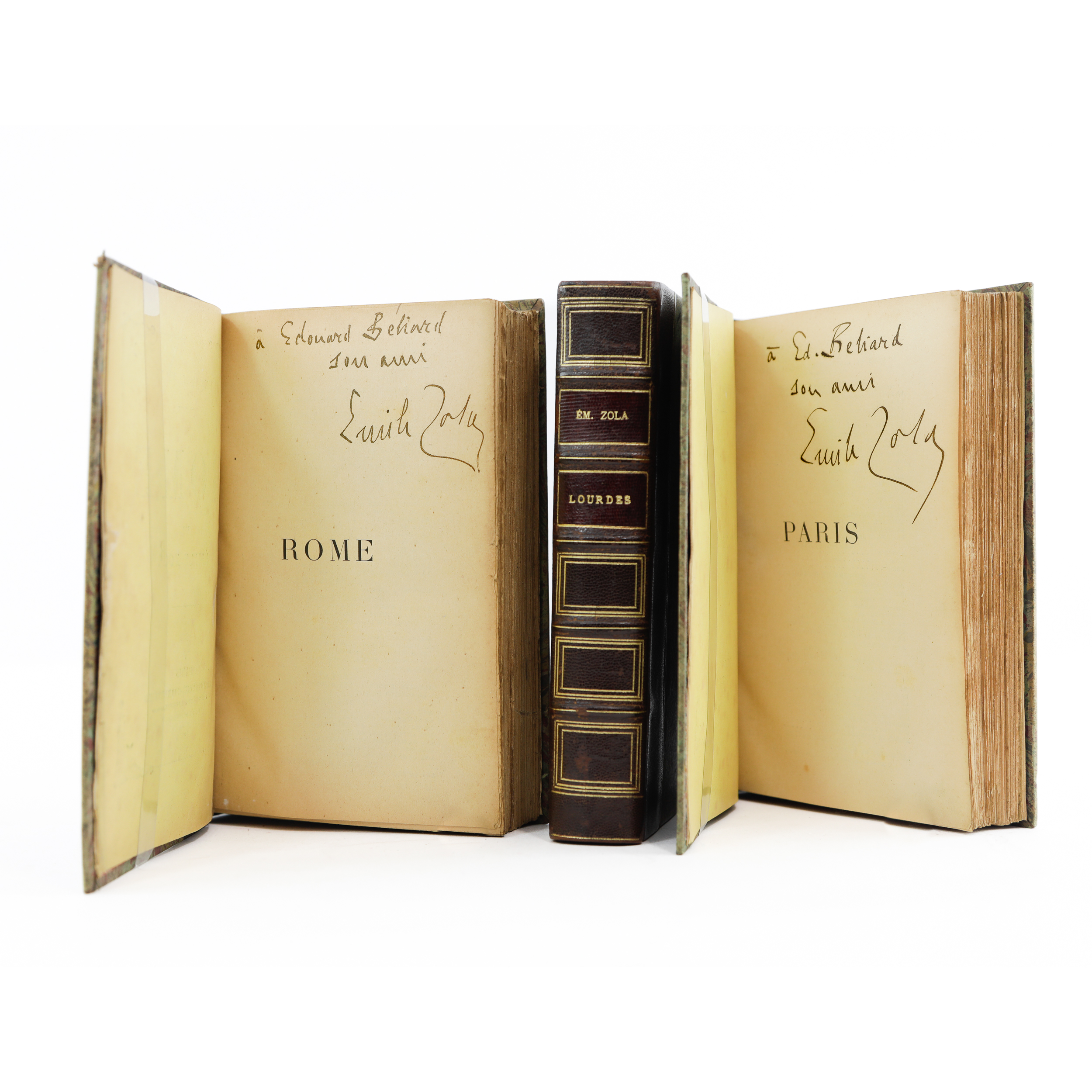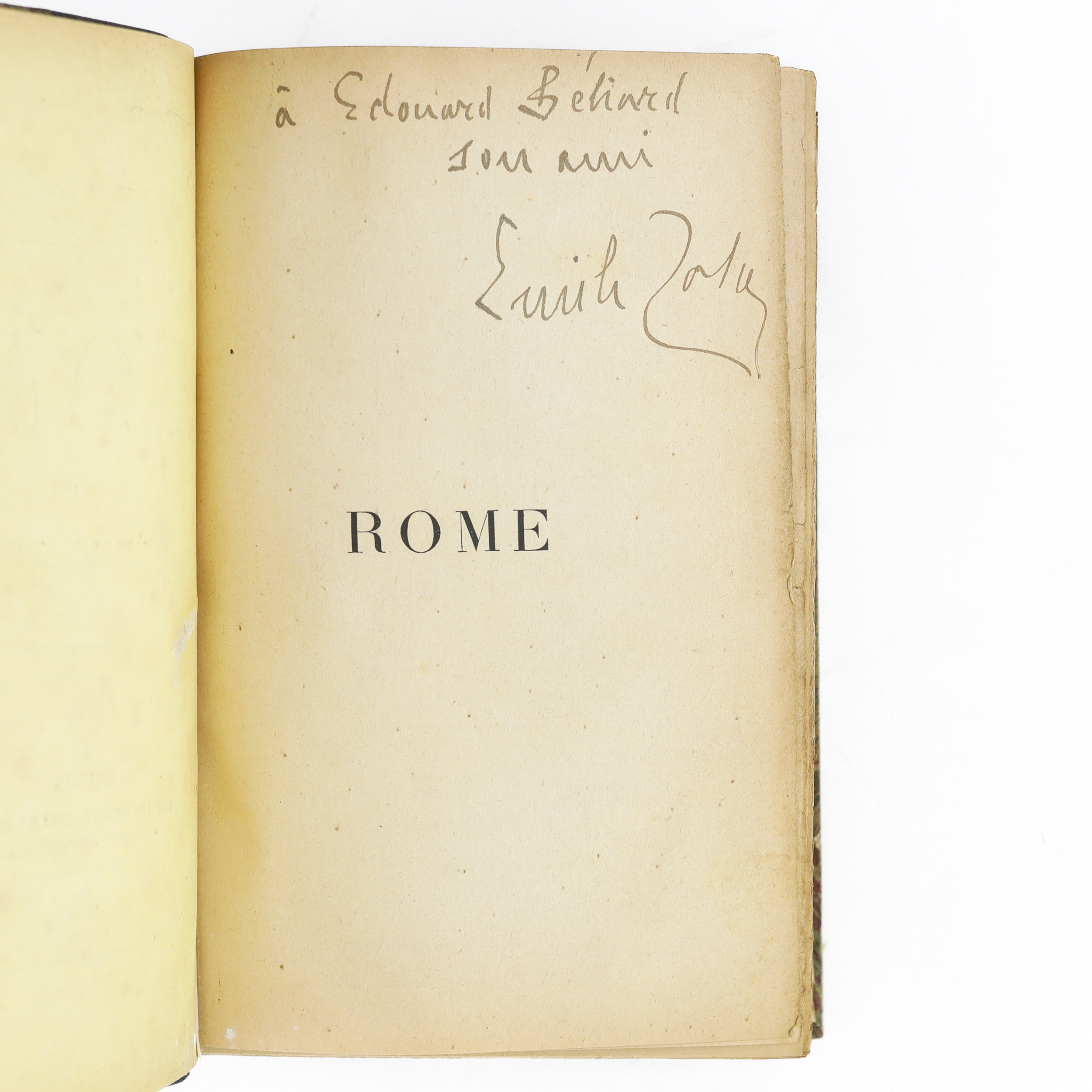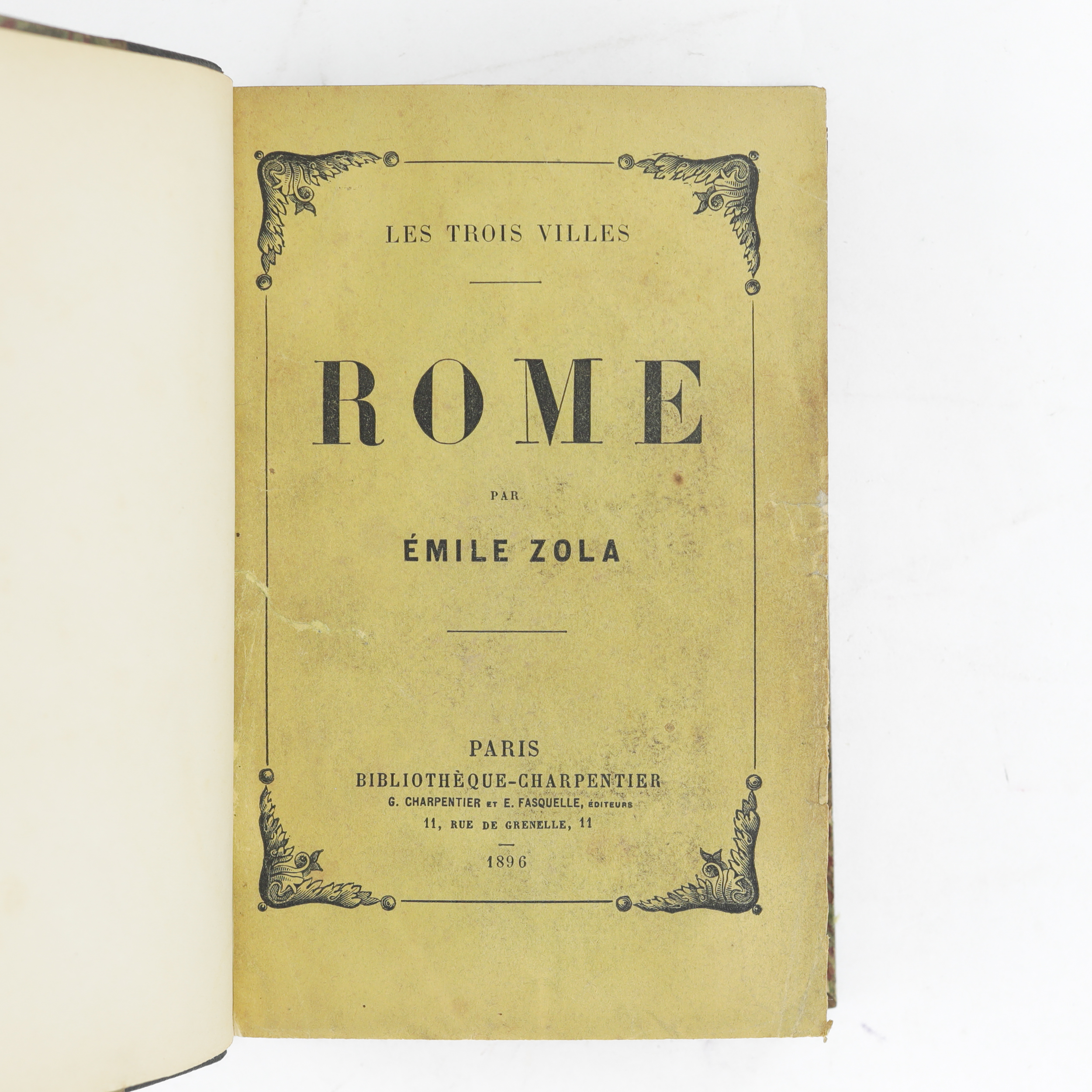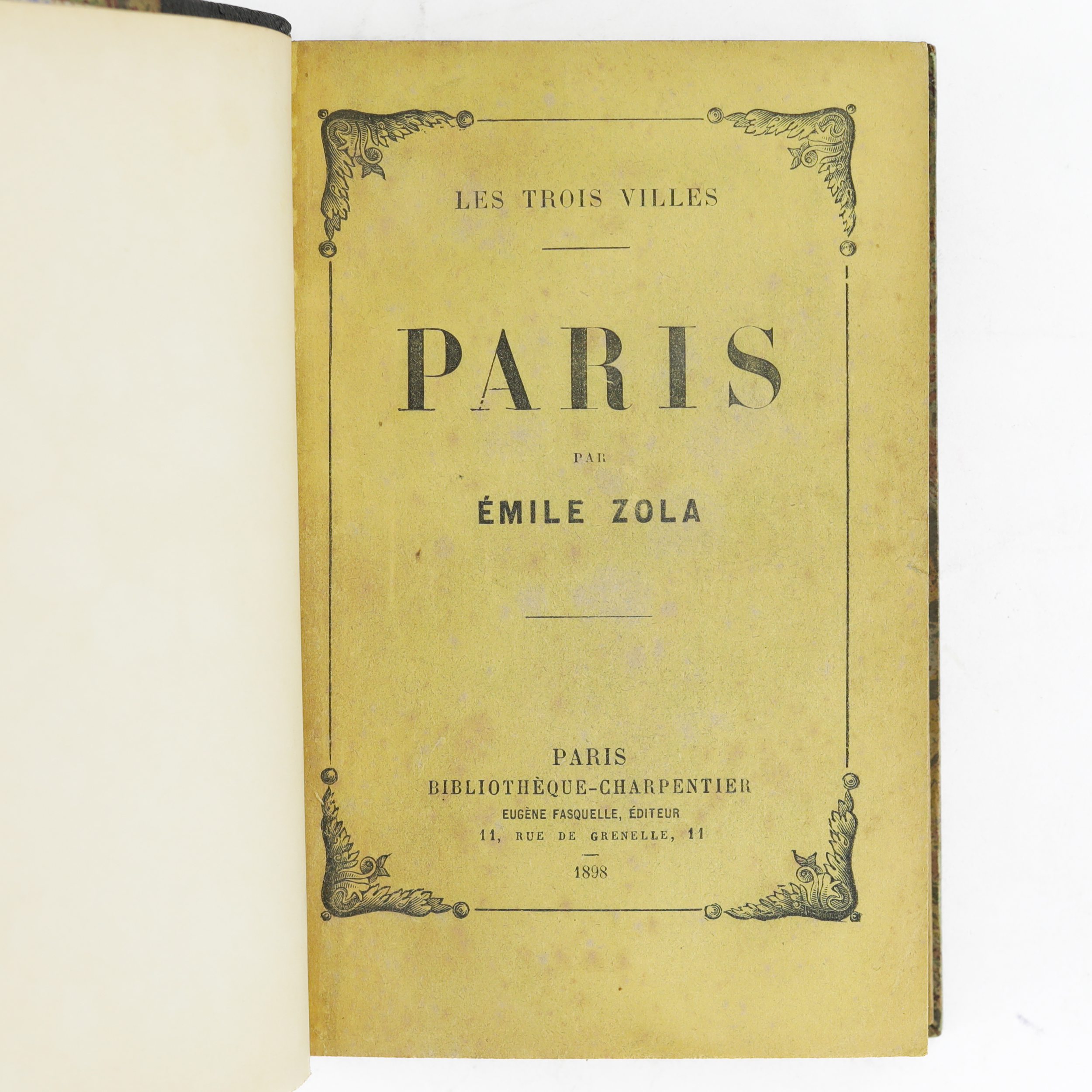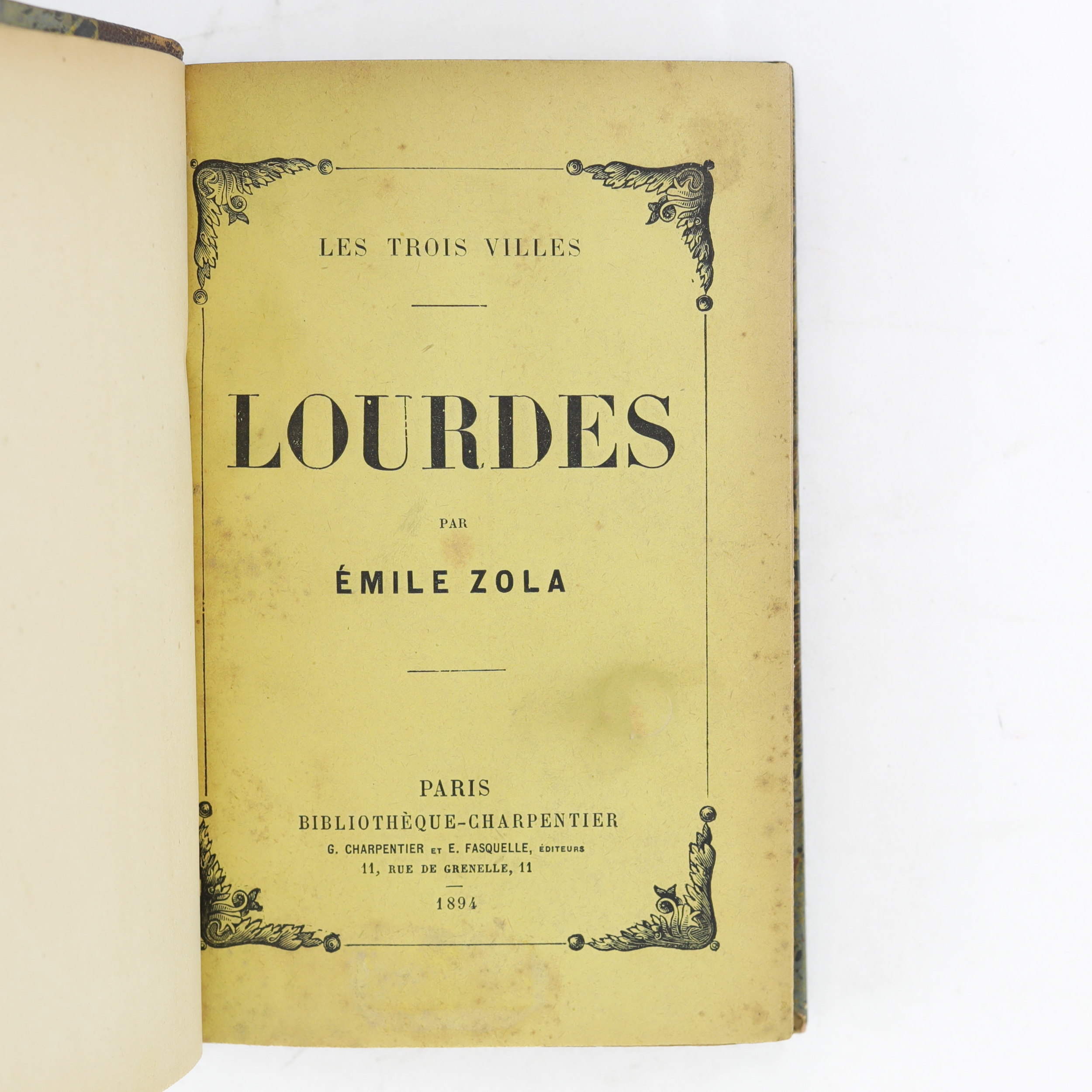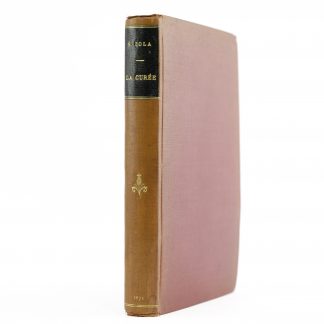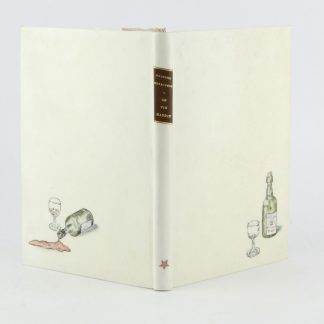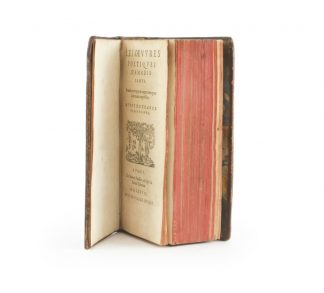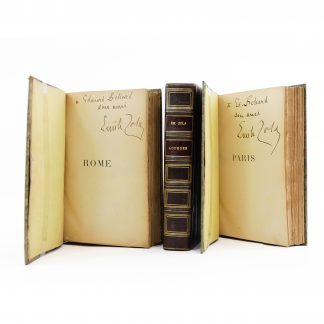Description
FIRST EDITIONS of the Three townswhich Émile Zola devoted himself to after Les Rougon-Macquart.
Current prints, unmarked.
SIGNED AUTOGRAPH LETTERS on the last two volumes, Rome and Paristo Édouard Béliard, an Impressionist painter and close friend of Zola, who inspired the character of Gagnière (The Work).
to Edouard Béliard
his friend
Emile Zolato Ed. Béliard
his friend
Emile Zola
A true "illustrious unknown", Béliard, of whom only around fifteen paintings can be found today, nevertheless took part in the first two Impressionist Salons, exhibiting 4 and then 8 paintings. Close to Monet, Renoir and Degas, and even more so to Cézanne and Pissarro, Béliard moved in the same circles as Zola: both served as witnesses to Marie-Louise Monnier when she married the writer, collector and art critic Paul Alexis (Le Figaro24 August 1888). Later, Béliard welcomed Zola to Pontoise, ensuring his link with the painters of the new generation. Henri Mitterand points out:
Zola went to school with painters, and not just any painters. [...] This apprenticeship has no equivalent among sociologists, at least those of his time, who lacked this almost professional complicity with artists." (II, p. 120)
Zola encouraged Béliard in his artistic ambitions, but criticised his lack of daring. In his 1876 "Salon" for The Messenger of EuropeZola described his friend as :
"a landscape painter whose distinctive trait is meticulousness. One senses in him the diligent copyist of nature. Having studied it in depth, he has acquired a great solidity of workmanship which makes each of his paintings an erudite and textual translation of nature. [...] The only fault I find with him is his lack of originality. I would like an inner flame to consume his scruples, even if that fire were to blaze at the expense of accuracy."
Béliard can easily be identified as Gagnière's model (The Work), a dreamy, music-loving painter who exhibited at the Salon des Refusés.
"a pearly grey landscape, a carefully painted bank of the Seine, pretty in tone if a little heavy, and perfectly balanced, without any revolutionary brutality." (p. 156)
Despite these jabs (and a profound disagreement over Proudhon's theories on art), Zola reproached Béliard for having given up painting to devote himself to politics.
Nevertheless, the two men remained loyal friends. When Béliard was elected mayor of Etampes (a position he held from 1892 to 1900), he chaired a public meeting in defence of Dreyfus, despite the crowd chanting "Down with Zola!
Bound in contemporary brown (Lourdes) and green (Paris, Rome) half morocco, spine ribbed and decorated with gold framing, gilt titles, gilt fillet on covers. Covers preserved without the spine. Spine faded, some rubbing. Paper browned.

